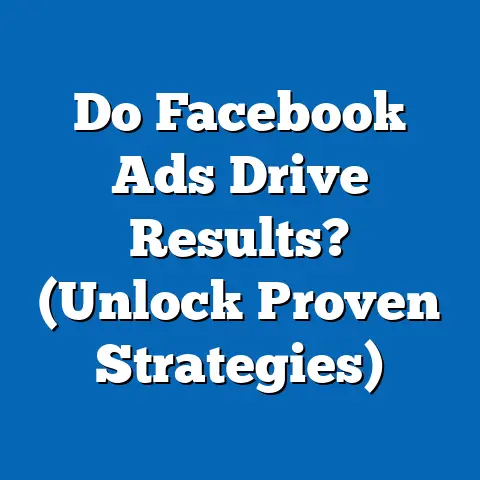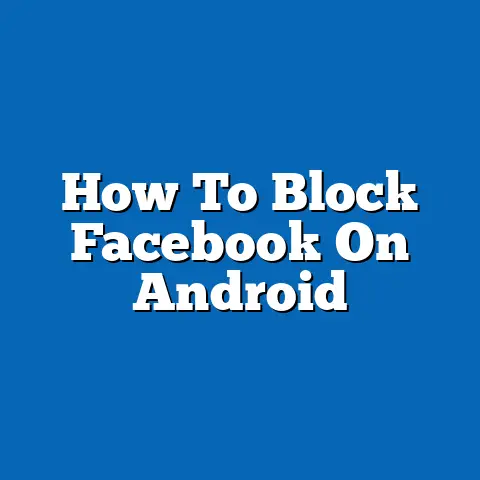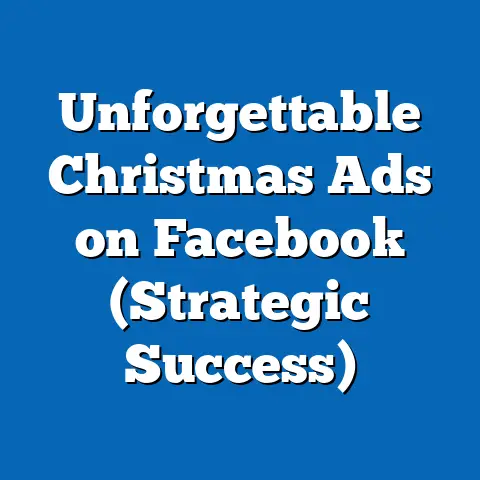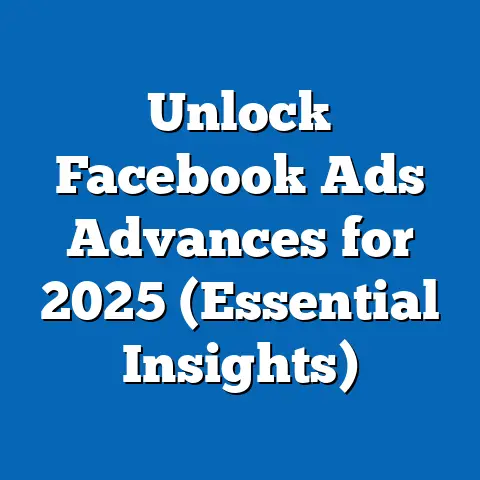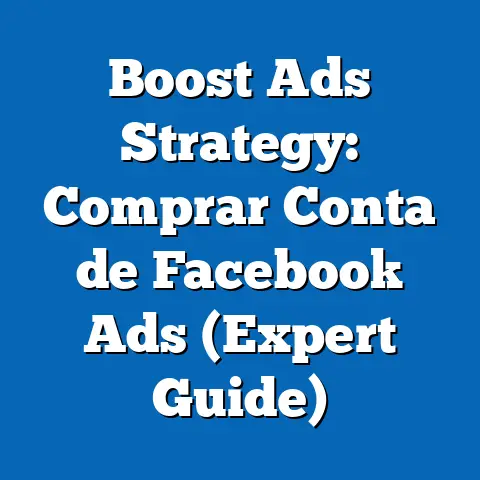Achieving Optimal CTR in Facebook Ads (Expert Insights)
Imagine a busy professional, Sarah, juggling meetings, deadlines, and a family. She’s constantly on the go, but she’s also savvy. She relies on social media to quickly find products and services that make her life easier – the perfect meal kit delivery, a time-saving cleaning service, or the latest productivity app. She’s scrolling through Facebook, and ads are popping up left and right. Some grab her attention instantly, speaking directly to her needs, while others fade into the background, easily ignored. In today’s crowded marketplace, that’s the reality. Your Facebook ads either capture attention and drive clicks or become just another piece of noise. That’s why understanding and optimizing your Click-Through Rate (CTR) is absolutely crucial. It’s the key to unlocking your Facebook ad’s full potential.
Section 1: Understanding Click-Through Rate (CTR)
Let’s start with the basics. What exactly is CTR?
What is Click-Through Rate (CTR)?
Click-Through Rate (CTR) is the percentage of people who see your ad and click on it. It’s calculated by dividing the total number of clicks your ad receives by the total number of impressions (times your ad is shown), then multiplying by 100 to get a percentage.
- Formula: (Total Clicks / Total Impressions) x 100 = CTR
For example, if your ad is shown 1,000 times and receives 20 clicks, your CTR would be 2%.
Why is CTR Important?
CTR is more than just a number; it’s a vital indicator of your ad’s effectiveness. Here’s why it matters:
- Relevance: A high CTR suggests that your ad is relevant to your target audience. It means your message is resonating with them, and they’re interested in what you’re offering.
- Quality Score: Facebook uses CTR, among other factors, to determine the “quality score” of your ad. A higher quality score can lead to lower ad costs and better ad placement.
- Ad Rank: CTR directly impacts your ad rank, which determines where your ad appears in the Facebook feed and how often it’s shown. A higher CTR can boost your ad rank, giving you more visibility.
- Campaign Performance: Ultimately, a higher CTR can lead to more website traffic, more leads, and more conversions, driving the overall success of your marketing campaigns.
Think of it like this: CTR is the first domino in a chain reaction that leads to business growth. A higher CTR means more people are taking that first step, showing interest in your product or service.
Average CTR Benchmarks
So, what’s considered a “good” CTR? It varies significantly depending on your industry, target audience, ad placement, and other factors. However, here are some general benchmarks to give you a starting point:
- Across all industries: The average CTR for Facebook ads is around 0.9%.
- Industry-specific:
- Apparel: 1.21%
- Finance & Insurance: 0.78%
- Retail: 1.59%
- Technology: 0.84%
- Travel & Hospitality: 0.90%
- Apparel: 1.21%
- Finance & Insurance: 0.78%
- Retail: 1.59%
- Technology: 0.84%
- Travel & Hospitality: 0.90%
These are just averages, and your results may vary. The key is to track your own CTR over time and strive to improve it. I’ve seen clients in competitive niches achieve CTRs of 3% or higher by implementing the strategies I’ll share in this guide.
Takeaway: CTR is a critical metric that reflects the relevance and effectiveness of your Facebook ads. Understanding its importance and knowing the benchmarks for your industry are the first steps toward achieving optimal results.
Section 2: Factors Influencing CTR in Facebook Ads
Now that you understand what CTR is and why it matters, let’s explore the key factors that influence it.
Ad Relevance
The single most important factor influencing CTR is relevance. If your ad isn’t relevant to the people seeing it, they’re simply not going to click.
- Target Audience: Make sure you’re targeting the right people. Use Facebook’s detailed targeting options to narrow down your audience based on demographics, interests, behaviors, and more.
- Ad Copy: Your ad copy should speak directly to the needs and desires of your target audience. Use language they understand and address their specific pain points.
- Offer: Your offer should be compelling and relevant to your target audience. Consider offering a discount, free trial, or other incentive to encourage clicks.
- Landing Page: The landing page you direct people to after they click on your ad should be relevant to the ad copy and offer. If there’s a disconnect, people will quickly bounce, hurting your conversion rate.
I once worked with a client selling organic baby food. Initially, they were targeting a broad audience of parents. We refined their targeting to focus on parents who were interested in organic products, natural living, and healthy eating. We also updated the ad copy to highlight the benefits of organic food for babies. The result? Their CTR more than doubled, and their conversion rate skyrocketed.
Visual Appeal
Humans are visual creatures. High-quality images and videos are essential for capturing attention in the crowded Facebook feed.
- High-Quality Images: Use images that are clear, well-lit, and visually appealing. Avoid blurry or pixelated images.
- Compelling Videos: Videos are even more engaging than images. Use videos that are short, attention-grabbing, and relevant to your ad copy.
- Eye-Catching Design: Use design elements like color, typography, and layout to make your ad stand out.
- Relevance: Your visuals should be relevant to your ad copy and offer. If there’s a disconnect, people will be confused and less likely to click.
According to a study by HubSpot, visuals make people 65% more likely to remember your brand. That’s a significant advantage!
Expert Insight: “Visuals are the gateway to your message,” says digital marketing expert Neil Patel. “They’re the first thing people see, and they can make or break your ad’s performance. Invest in high-quality visuals that are relevant to your target audience and your offer.”
Compelling Copy
Even with great visuals, you need compelling copy to persuade people to click.
- Headline: Your headline is the first (and often only) thing people read. Make it short, attention-grabbing, and relevant to your offer.
- Body Copy: Your body copy should expand on your headline and explain the benefits of your offer. Use clear, concise language and avoid jargon.
- Call to Action (CTA): Your CTA tells people what you want them to do. Use strong, action-oriented verbs like “Shop Now,” “Learn More,” or “Get Started.”
- Urgency: Create a sense of urgency to encourage people to click now. Use phrases like “Limited Time Offer” or “While Supplies Last.”
I’ve found that using numbers in headlines can significantly boost CTR. For example, “5 Tips for Boosting Your Facebook Ad CTR” is more likely to grab attention than “How to Boost Your Facebook Ad CTR.”
Ad Placement
Where your ad appears on Facebook can also impact its CTR.
- News Feed: The News Feed is the most common ad placement and typically has the highest CTR.
- Right Column: Right column ads are smaller and less visually appealing, so they tend to have lower CTRs.
- Instagram Feed: If you’re running ads on Instagram, the feed placement is usually the most effective.
- Stories: Stories ads are full-screen and immersive, but they disappear after 24 hours, so they may not be suitable for all offers.
- Audience Network: The Audience Network allows you to show your ads on other websites and apps. CTRs on the Audience Network can vary widely depending on the website or app.
Facebook’s data shows that mobile News Feed ads generally outperform desktop ads in terms of CTR. This is likely because people are more engaged on their mobile devices and more likely to click on ads.
Takeaway: Relevance, visual appeal, compelling copy, and ad placement are all critical factors influencing CTR. By optimizing each of these elements, you can significantly improve your ad performance.
Section 3: Strategies for Optimizing CTR
Now that you know the factors that influence CTR, let’s dive into some specific strategies you can use to optimize your ads.
A/B Testing
A/B testing, also known as split testing, is the process of comparing two versions of your ad to see which one performs better.
- Test One Element at a Time: When A/B testing, it’s important to test only one element at a time. For example, you might test two different headlines or two different images.
- Use a Control Group: Your control group is the original version of your ad. You’ll compare the results of your test ad to the control group to see which one performs better.
- Run Your Tests Long Enough: Make sure you run your tests long enough to gather statistically significant data. A good rule of thumb is to run your tests for at least a week or until you’ve reached a certain number of impressions and clicks.
- Analyze Your Results: Once you’ve gathered enough data, analyze your results to see which version of your ad performed better. Use this information to make informed decisions about your ad campaigns.
I’ve seen clients achieve significant CTR improvements by simply A/B testing different headlines. For example, we tested two headlines for an ad promoting a new weight loss program:
- Headline A: “Lose Weight Fast with Our New Program”
- Headline B: “Transform Your Body in 30 Days”
Headline B outperformed Headline A by 30% in terms of CTR. This simple test helped us optimize the ad and drive more clicks.
Utilizing Facebook’s Targeting Options
Facebook offers a wide range of targeting options that allow you to reach specific demographics, interests, and behaviors.
- Demographics: Target people based on age, gender, location, education, and more.
- Interests: Target people based on their interests, hobbies, and passions.
- Behaviors: Target people based on their online behavior, such as purchasing habits, website visits, and app usage.
- Custom Audiences: Create custom audiences based on your existing customer data, website traffic, or app users.
- Lookalike Audiences: Create lookalike audiences based on your custom audiences. This allows you to reach new people who are similar to your existing customers.
I always recommend starting with a well-defined target audience. The more specific you are, the more relevant your ads will be, and the higher your CTR will be.
Seasonality and Trends
Seasonal changes and current trends can significantly impact ad performance.
- Seasonal Campaigns: Create campaigns that are tailored to specific seasons or holidays. For example, you might run a Christmas campaign in December or a back-to-school campaign in August.
- Trend-Based Ads: Incorporate current trends into your ad copy and visuals. For example, if a particular meme is popular, you might use it in your ad.
- Timely Offers: Offer discounts or promotions that are relevant to the current season or trend.
I worked with a client selling winter clothing. We created a campaign that highlighted the benefits of their products for staying warm and dry during the winter months. We also offered a discount on winter coats. The result? Their CTR and sales both increased significantly.
Takeaway: A/B testing, utilizing Facebook’s targeting options, and leveraging seasonality and trends are all effective strategies for optimizing CTR. By implementing these strategies, you can make your ads more relevant, engaging, and effective.
Section 4: Expert Insights and Case Studies
Let’s hear from some experts and examine real-world case studies to further illustrate the power of optimizing CTR.
Expert Insights
“The key to a successful Facebook ad is to understand your audience and create ads that resonate with them,” says social media marketing expert Mari Smith. “Don’t just focus on selling your product or service; focus on providing value to your audience.”
“Don’t be afraid to experiment with different ad formats and targeting options,” adds digital marketing consultant Amy Porterfield. “The more you test, the more you’ll learn about what works best for your audience.”
“Always track your results and make adjustments as needed,” advises Facebook ads expert Jon Loomer. “Facebook advertising is an ongoing process, and you need to constantly monitor your campaigns and make tweaks to improve performance.”
Case Studies
-
Dollar Shave Club: Dollar Shave Club is known for its humorous and engaging Facebook ads. They use videos that are short, funny, and relevant to their target audience. As a result, they’ve achieved high CTRs and have built a strong brand presence on Facebook.
-
Airbnb: Airbnb uses visually stunning images and videos to showcase their unique accommodations. They also use targeted ads to reach people who are interested in travel and specific destinations. This has helped them achieve high CTRs and drive bookings.
-
Warby Parker: Warby Parker uses simple, clean ads that highlight their stylish eyeglasses. They also offer a free home try-on program, which is a compelling offer that encourages clicks. This has helped them achieve high CTRs and build a loyal customer base.
Dollar Shave Club: Dollar Shave Club is known for its humorous and engaging Facebook ads. They use videos that are short, funny, and relevant to their target audience. As a result, they’ve achieved high CTRs and have built a strong brand presence on Facebook.
Airbnb: Airbnb uses visually stunning images and videos to showcase their unique accommodations. They also use targeted ads to reach people who are interested in travel and specific destinations. This has helped them achieve high CTRs and drive bookings.
Warby Parker: Warby Parker uses simple, clean ads that highlight their stylish eyeglasses. They also offer a free home try-on program, which is a compelling offer that encourages clicks. This has helped them achieve high CTRs and build a loyal customer base.
These case studies demonstrate the power of relevance, visual appeal, compelling copy, and targeted advertising. By implementing these strategies, you can achieve similar results for your own business.
Takeaway: Expert insights and case studies provide valuable lessons about what works in Facebook advertising. By learning from the experiences of others, you can avoid common pitfalls and achieve better results.
Section 5: Measuring Success Beyond CTR
While CTR is an important metric, it’s not the only one that matters. It’s crucial to view CTR in conjunction with other key performance indicators (KPIs) to get a complete picture of your ad’s performance.
- Conversion Rate: Your conversion rate is the percentage of people who click on your ad and then take a desired action, such as making a purchase, signing up for a newsletter, or filling out a form.
- Return on Ad Spend (ROAS): Your ROAS is the amount of revenue you generate for every dollar you spend on advertising.
- Customer Lifetime Value (CLV): Your CLV is the total revenue you expect to generate from a customer over the course of their relationship with your business.
A high CTR doesn’t always equate to sales. For example, you might have a high CTR but a low conversion rate if your landing page is poorly designed or your offer isn’t compelling. That’s why it’s important to track all of these metrics and make sure they’re aligned with your overall marketing goals.
I’ve seen cases where clients were celebrating high CTRs, only to realize that their conversion rates were abysmal. They were driving a lot of traffic to their website, but none of it was converting into sales. After analyzing the data, we discovered that their landing page was confusing and difficult to navigate. By redesigning the landing page, we were able to significantly improve their conversion rate and drive more sales.
Takeaway: CTR is an important metric, but it’s just one piece of the puzzle. To truly measure the success of your Facebook ads, you need to track conversion rates, ROAS, and CLV.
Conclusion
Achieving optimal CTR in Facebook ads is a journey, not a destination. It requires constant testing, optimization, and adaptation. By understanding the factors that influence CTR, implementing proven strategies, and learning from the experiences of others, you can significantly improve your ad performance and achieve your marketing goals.
Remember Sarah, the busy professional? By creating relevant, visually appealing, and compelling ads that speak directly to her needs, you can capture her attention and drive her to take action. And that’s what it’s all about – connecting with your target audience in a meaningful way and providing them with value.
So, go out there, experiment with different strategies, and track your results. With a little effort and dedication, you can unlock the full potential of your Facebook ads and achieve optimal CTR. The next step is to take what you’ve learned today and start implementing these strategies in your own campaigns. Good luck, and happy advertising!

